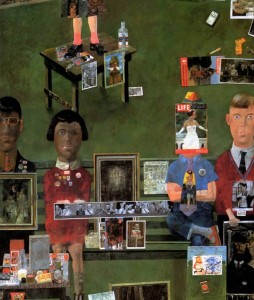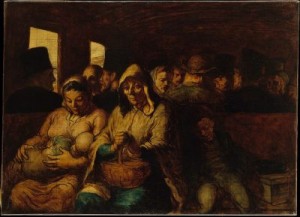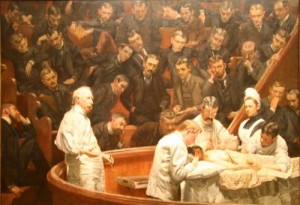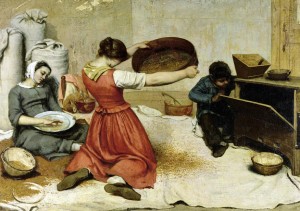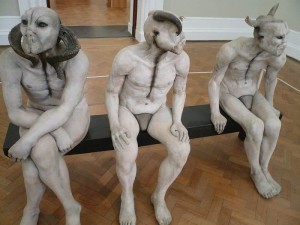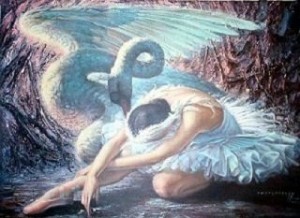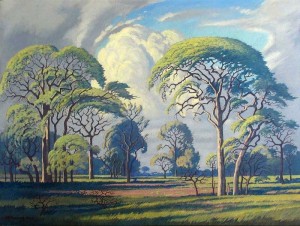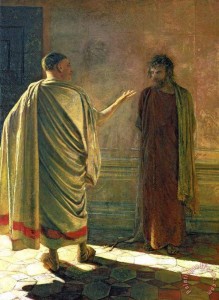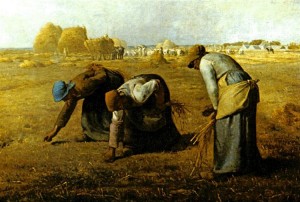Subscribe to Updates
Get the latest creative news from FooBar about art, design and business.
Archives: Artworks
On The Balcony by Peter Blake
On The Balcony by Peter Blake was produced in 1955-1957 and is considered to be one of the famous artworks of Pop Art movement. The work can be viewed now at TATE Modern
Medium: Oil Painting
On the Balcony is a famous artwork by Peter Thomas Blake who is a British artist widely known for his pop artworks.
He is particularly recognized for the centralization of popular culture in his paintings. He is an iconic figure in the world of pop artwork movement.
One of his masterpiece artworks is On the balcony, Blake creatively makes a combination of different images of simple, ordinary, and normal everyday people.
Then he thematized these pictorial combinations on the subject matter " On the balcony."
The images that constitute the painting consist of transitory elements like magazines, snapshots, and consumer goods.
Artworks found in museums and galleries are also engraved in the painting.
The painting portrays, for instance, a figure on the left side holding a copy of Eduart Manet’s The Balcony (1868) and a LIFE magazine copy is also included.
In all, there are about 32 distinct versions of balcony images in the paintings.
Moreover, juvenility or youth age-grade is being represented in the painting as teenagers. These teenagers can be perceived to be samples of youths from a new generation with an open-minded mindset to the key concepts and principles of pop artwork.
These principles of pop artwork are concerned with the proper breakdown of traditional comprehension and understanding of art objects and also to demystify the difference between art and life.
Imagine a world without art.
The world will be reduced to nothing but a lifeless big sphere revolving around the sun in quiet gloom. Art is the life-giving force that keeps the world spinning around in fun.
Without art, there’s outrightly no meaning to life. Human existence, values, cultures, traditions, language, and other salient things associated with human beings are all embedded, lodged, and deeply rooted in art. For these indispensable roles that art plays, both visually and non-visually, in the world, it is not an overstatement to say art is a close friend of life.
Art is wide.
But no matter the vastness of art, every art form aims to pass messages. As much as art radiates with beauty and aestheticism, the underlying maxim spelling its essence is the message it’s attempting to pass across to the audience.
Furthermore, On the Balcony can be misunderstood to be a collage.
Collage is an art form that involves the incorporation of various materials like cloth, paper, or other objects onto a canvas and engraving them into a composition or painting.
However, On the Balcony is an oil painting, an art process of painting in oil colors.
Although, Blake employs the collage method of incorporating several images within the painting, his painting On the Balcony is an iconic artwork that shows his techniques in oil painting. The artwork can be viewed at Tate Britan
More artworks..
The Last Supper by Leonardo da Vinci
The Last Supper by Leonardo da Vinci was produced in 1495-1498 and is considered to be one of the famous artworks of Renaissance Art movement. The work can be viewed now at Convent of Santa Maria delle Grazie, Milan
Medium: Oil Painting
The Last Supper is a painting produced in three years 1495-1498. by Italian artist Leonardo da Vinci.
One of the most representative and analyzed masterpieces of The Renaissance and has considered as one of the most controversial works of all time. It’s one of the most recognizable pieces of art in history.
This dining room mural depicts one of the most well-known moments of the New Testament.
It’s been the source of heated debates on religion, history, art, and conspiracy theories. It’s narrowly avoided destruction time and time again
The painting was commissioned for refectory of the Convent of Santa Maria Delle Grazie by Ludovico Sforza Il Moro, Duke of Milan and patron of artists.
The Last Supper of Jesus and his twelve disciples is a universal Gospel theme and the painting composition is extraordinary since it does not reveal betrayal at first sight.
The anxiety of each disciple is carefully characterized bar one in the shadow – Judas, who is holding a bag with money and grabbing the bread at the same time as Jesus.
The way of grouping disciples and rather a feminine look of Apostle John has inspired many controversial theories about the painting.
Almost nothing of the original painting is left due to the usage of the special mural techniques.
Who painted The Last Supper?
The Last Supper is a painting produced in three years 1495-1498. by Italian artist Leonardo da Vinci – a major contributor of the renaissance art movement. Check out the top characteristic of renaissance art that changed the world forever
The Last Supper Story – A Moment of Drama
The story is simple – It’s dinner.
So, what exactly are we looking at?
The title tells us, sure; it’s the Last Supper.
Let’s understand the meaning and analysis of The Last Supper
Even if you are not a Christian, odds are you’ll be familiar with the sequence of events recorded in all four of the New Testament gospels.
It is, as the name suggests, the last meal that Jesus shared with his followers before his execution.
That description, however, only starts to cover what the painting captures. There are some serious emotion and drama here.
To start with, let’s take another look at that scene description.
The last meal Jesus is ever going to have, with the people that love him, before he is arrested and executed.
Now, that’s a pretty heavy set up and can go some way to explain the drama of Da Vinci’s scene.
Jesus is, appropriately, at the center of the composition.
He is still and appears to be downcast (as I’m sure most people would be, in that situation.) Moving out from the center of the scene, however, you can see that the rest of the table is not in such a cool and collected frame (pardon the pun) of mind.
This is because Da Vinci did something that no-one else had ever done.
While this scene had been painted many, many times, the scenes had always been quiet, somber, and reflective, focusing only on Jesus’ holiness and divinity. Da Vinci chose to focus on a more human aspect of the evening.
Here’s how it goes: Jesus tells his friends he’s going to die. He’s told them this several times already, so the reaction isn’t that strong. It’s possible they don’t believe him, given their reactions later in the story, but let’s not get off track.
Then he hits them with the big news. He is going to die because one of them is going to betray him.
One of his best friends, one of the twelve specially chosen disciples, is going to turn him into the authorities. Someone at this very table.
Cue drama.
Everyone freaks out.
What we are looking at is a group of men who have lived and worked with one another for three years, just finding out that one of them is a traitor. And that’s the moment that Da Vinci chose to capture. The heat of the moment, anger, confusion, fear.
People question each other in clusters, pointing in accusation, gesturing wildly, reeling with grief. To the left, the figure of Judas, the betrayer, sits shadowed and surrounded by his friends.
And in the center of it all, someone who knows that as soon as they leave this room they will begin a journey that leads to their death. That’s some pretty heavy subject matter, and Da Vinci managing to do it justice is one of the reasons this painting has remained as iconic as it is.
The Characters in The Last Supper

Left to right – The characters represented in the Last Supper painting are
- Group 1 – Bartholomew, James, son of Alphaeus, and Andrew
- Group 2 – Judas Iscariot, Peter, and John
- Jesus
- Group 3- Thomas, James the Greater, and Philip
- Group 4 – Matthew, Jude Thaddeus, and Simon the Zealot
The Last Supper – Hidden Details
There are a number of hidden details within the painting that you can spot if you know what to look for.
To begin with, the meal is a little off-menu. The Last Supper is the meal on which Christian communion is based – bread and wine only.
But the meal Da Vinci depicted includes a dish of fish and oranges. This dish has been subject to a ton of debate. Some claim that the fish are eels, and therefore represent faith and indoctrination.
Others claim the fish are herring, which would symbolize a nonbeliever. Or maybe Leonardo figured that they’d all have been eating fish, what with all the ex-fishermen about. Who knows?
There is another food metaphor up for debate.
Have you ever heard of spilled salt meaning bad luck, or some kind of evil foreshadowing?
It’s an old superstition and one that Da Vinci may have referenced with his dining set up. There is a salt cellar lying on the table, having been knocked over – by the one and only Judas, as he reaches forward for the food at the same time as Jesus.
This motion is another detail from the original scene when Jesus claimed that his betrayer had just had his hand in the same dish as Jesus.
There have been suggestions made that some of the faces at the table mean more than just their models – although the rumor that Da Vinci used a real-life criminal to model for Judas has been disproved.
However, some have pointed out that the face of James the Less (second from the left) bears a striking resemblance to Mr. L. Da Vinci… hmm.
Artistic Legacy and The Historical Importance
Besides its dramatic content, the Last Supper is remembered for a number of historical reasons.
It was a commissioned work, set to be painted on the wall of the refectory of the Convent of Santa Maria Delle Grazie. The refectory was, essentially, the dining room, thus making the subject matter particularly suitable.
Although this is something of a step up from the menu wall-art of modern-day establishments.
The composition of the painting is universally recognized as an amazing artistic feat.
To begin with, the use of perspective is incredible. Da Vinci chose to heighten the effect of the long table scene by using a one-point linear perspective, meaning that all the lines of perspective have to move towards the same single vanishing point.
That vanishing point? Jesus’ head.
You can see this most easily by following the lines of the windows behind the table.
This keeps the image focused on Jesus while still allowing attention to be drawn by the engaging emotional scenes which take up the whole length of the foreground.
The depiction of the scene itself is also looked at as an impressive technical accomplishment.
There are thirteen figures present; the figure of Jesus is at the center of the frame, forming a triangle.
Surrounding him, the twelve disciples are grouped together in threes. Each of the figures has its own distinct stance, fitting in with those surrounding it to carry the movement of the scene from one end of the table to the other. Even though the movements being made – hand gestures, people leaning forward – are large, even eye-catching, none of them draw attention more than the others.
The scene is perfectly balanced.
Realism is also maintained, despite the challenge of the one-point perspective.
The positions of the disciples are natural, energetic, giving the emotion of the scene a ring of truth; real models were used in order to properly capture the drama of the moment.
Even the colors are more varied than one would normally find in a similar painting, allowing Da Vinci to capture the scene with the subtlety he wanted.
These colors, however, lead us to yet another intriguing piece of information about the painting… its near-destruction.
A Tale of Survival
The fact that it is still possible to see this painting today (provided you are willing to book way in advance) is something close to a full-on miracle.
There has been a lot going against it – from the moment it was created, starting with the artist himself.
Let’s back up a little.
The Last Supper was commissioned as a fresco.
You might recognize that term as referring to a painting done on a wall, which it usually is. But it also refers to a specific method of painting.
The artist would apply wet plaster to the wall, then add pigment to the plaster before it dried, meaning the painting would pretty much-become part of the wall.
The problem with this is that the artist had to work really fast to get what he wanted down before the plaster dried – and the color would end up looking kind of flat. Da Vinci decided that, for his vision, he needed the versatility and expression of oil paint.
He decided to use a mix of tempera and oil paints instead, to allow himself much more freedom.
And it worked – to start with. He was able to make changes as he went, perfecting the astonishing scene in all its detail.
He may even have wondered why he was the first one to ever try this… he found out soon enough, however, when the paint started drying.
And flaking off. He’d primed the wall beforehand, but it just wasn’t enough for the unsuitable paints and the humid climate.
So, people took really-extra special care of it, right?
To make sure this masterpiece lasted for years to come?
Yeah, not so much. Throughout the hundreds of years that followed, the painting was damaged over and over again.
Some of the damage was, sadly, caused by those who attempted to restore the artwork. Another damage was accidental, or even malicious.
There were the French soldiers who, fresh from the French Revolution, decided to relieve their French Revolutionary feelings by vandalizing the wall.
Then there was the time a curtain was hung in front of the painting, only to rub off more of the paint.
And the time someone decided that the new door to the refectory should be placed in the middle of the mural wall, removing Jesus’ feet.
And then there was the time the church was bombed in world war two – although the wall had fortunately been protected beforehand.
All these damages, coupled with the struggles to keep the original image intact in the first place, mean that most of the painting is not in its original form.
While historians and scholars have worked for years on whether the much-repaired present-day image lives up to the original, it is perhaps telling that, well, they’re still debating it.
Something to Remember
While not quite so famous as his Mona Lisa, Leonardo Da Vinci’s Last Supper is one of the most reproduced and discussed works in art history.
From the originality of its composition to the tragic damages and decay that plagued it, to the hotly debated potential meaning behind every grain of salt, it maintains its relevance in the present day: forever memorable, and forever remembered.
The work can be viewed at the Convent of Santa Maria Delle Grazie, Milan, Italy.
More artworks..
The Third Class Carriage by Honore Daumier
The Third Class Carriage by Honore Daumier was produced in 1862 and is considered to be one of the famous artworks of movement. The work can be viewed now at The Metropolitan Museum of Art, New York
Medium: Oil Painting
The Third Class Carriage is an oil painting produced between 1862 and 1864 by French painter Honore Daumier.
Honore Daumier’s paintings were influenced by rail traveling theme and painted many images on similar theme since 1840’s. During 1860s, and as of now too, third-class railway carriages were for only those people who couldn’t afford first or second class tickets. These carriages were dirty and open having hard benches for sitting. On the left hand side of this painting, a woman was holding her baby on a bench, a young boy was asleep while another older woman hands were clasped onto a basket. They were seated and facing the viewer. Behind those benches were several men and women seated.
There was hardly any description available and thought to be were anonymous. Honore Daumier wanted to convey the message of the impact of industrialization during the middle of the nineteenth century in Paris on urban life. Through this painting many were attracted with the hardship and quality of life urban travelers were facing in the Third Class railways.
The second version of this painting can be viewed at the National Gallery of Canada with the same title name as The Third Class Carriage. The sequence of the composition of this painting was still unresolved. The dimensions of this painting The Third Class Carriage were 65.4 cm × 90.2 cm or 25.7 in × 35.5 in.
The work can be viewed at Metropolitan Museum of Art
More artworks..
The Agnew Clinic by Thomas Eakins
The Agnew Clinic by Thomas Eakins was produced in 1889 and is considered to be one of the famous artworks of Realism movement. The work can be viewed now at University of Pennsylvania, Philadelphia, Pennsylvania
Medium: Oil Painting
The Agnew Clinic is an oil painting produced in 1889 by American artist Thomas Eakins.
As the name suggests, The Agnew Clinic depicts Dr. Agnew who was performing a partial mastectomy in his Clinic. On the left-hand side of the painting, Dr. Agnew is standing holding a tool similar to a scalpel. With him, other doctors and a nurse are present around the patient. Other Doctors were Dr. J. William White, Dr. Joseph Leidy, and Dr. Ellwood R. Kirby. The first doctor is applying a bandage to the patient, the second one is taking note of the patient’s pulse while the last doctor was administering anesthetic. Mary Clymer is the nurse of Dr. Agnew who is standing between two doctors of the right observing the patient and doctors. The artist Thomas Eakins can also be found in this painting behind the nurse over the rightmost part of the painting.
This painting is very well compared with another painting of Thomas Eakins ‘The Gross Clinic’ which was painted fourteen years earlier compared to when this painting was completed. The Gross Clinic painting prospects a different scenario of the medical profession. Dr. Agnew had no blood drops on either of his white doctor’s coat or his scalpel.
Thomas Eakins earlier painting showed professionalism in the doctor’s clinic but this painting lacked this due to the fear and discomfort environment inside the clinic. Thus, the title of this painting was a hotly debated topic. It created controversy because the patient was a nude woman being watched by several other men. The dimensions of the painting The Agnew Clinic were 214 cm × 300 cm or 84 3⁄8 in × 118 1⁄8 in.
The work can be viewed at John Morgan Building at the University of Pennsylvania, Philadelphia, Pennsylvania
More artworks..
The Wheat Sifters by Gustave Courbet
The Wheat Sifters by Gustave Courbet was produced in 1854 and is considered to be one of the famous artworks of Realism movement. The work can be viewed now at Musee des Beaux-Arts de Nantes, Nantes
Medium: Oil Painting
The Wheat Sifters is an oil painting produced in 1854 by French painter Gustave Courbet.
The Wheat Sifters and The Young Ladies of the Village are two similar works that portrayed the same scene and theme
In this painting, there are two women, one on the left hand side while the other placed at center. The two women modeled for this painting were considered to be Courbets own sisters. On the right hand side, there is a boy assumed to be Gustave Courbet’s son. The woman at the center is Zoe who is sifting the wheats, along with Zoe, who is also sifting and part of the process. Gustave Courbet portrayed the rural life and the hard work depicted by Zoe through holding and shaking the large sieve for sifting.
The work can be viewed at Musée des Beaux-Arts de Nantes, Nantes
More artworks..
The Village Maidens by Gustave Courbet
The Village Maidens by Gustave Courbet was produced in 1851–1852 and is considered to be one of the famous artworks of Realism movement. The work can be viewed now at The Metropolitan Museum of Art, New York
Medium: Oil Painting
The Village Maidens is an oil painting produced between 1851 and 1852 by the French painter Gustave Courbet.
The Village Maidens is also known by the name Young Ladies of the Village. This painting shows Courbets three sistersZélie, Juliette, and Zoéstrolling in a small valley near his native village of Ornans. The critics attacked it as repetitive, graceless, and traditional work. The painting followed realism as an execution-style and first exhibited at the Salon of 1952.
The work can be viewed at the Metropolitan Museum of Art
More artworks..
The Butcher Boys by Jane Alexander
The Butcher Boys by Jane Alexander was produced in 17th Century and is considered to be one of the famous artworks of Contemporary art movement. The work can be viewed now at South African National Gallery, Cape Town
Medium: Oil Painting
The Butcher Boys is a sculpture produced in 1986 by South African artist Jane Alexander.
The three figures depict the human monsters with black eyes, powdery skin due to plaster and were sitting on a bench with no mouth directly conveying to the State of Emergency implications. These three beasts were free from their outside senses.
Jane Alexander covered their ears and mouth with thick rough skin which appears that they were missing their organs of sensing. Jane Alexander’s sculpture The Butcher Boys-inspired many works and was published with a cover photo on Brett Bailey’s Plays of Miracle similarly poses by three men.
South African band Die Antwoord during Feb 2012, released their album Ten$Ion online teaser, which referenced The Butcher Boys sculpture without taking Jane Alexander permission, which in fact turned out to a huge controversy
he sculpture exhibits three life-size humanoid beasts with powdery skin, black eyes, broken horns, and no mouths sitting on a bench. The figures are considered to have no senses, as you can see ears, heads and mouths are missing, or rather covered with thick roughened skin
The Butcher Boys were painted on oil having plaster bodies seated on bench with animal horn and bone details. The work formed part of her MAFA submission (University of the Witwatersrand) and was first exhibited at the Market Theatre Gallery in Johannesburg in 1986
The work can be viewed at South African National Gallery, Cape Town, South Africa
More artworks..
The Dying Swan by Vladimir Tretchikoff
The Dying Swan by Vladimir Tretchikoff was produced in 1949 and is considered to be one of the famous artworks of movement. The work can be viewed now at Private Collection
Medium: Oil Painting
The Dying Swan is an oil painting produced in 1949 by South African painter Vladimir Tretchikoff.
The Dying Swan was also known popularly by the name ‘ Alicia Markova The Dying Swan’.
This painting by Vladimir Tretchikoff was completed between 1949 and 1951 by Vladimir Tretchikoff. Alicia Markova did the most famous role of the Dying swan and thus became an inspiration for all lovers of the ballet. Vladimir Tretchikoff was also among them who then modeled Alicia Markova and painted the swan as if they were one. In this painting, above the head of the model was the swan coming out and both of their heads were lowering down. The dimensions of the painting The Dying Swan were 92 cm × 72 cm or 36 in × 28.5 in.
This painting by Vladimir Tretchikoff, the artist completed between 1949 and 1951 by Vladimir Tretchikoff. Alicia Markova did the most famous role of the Dying swan and thus became an inspiration for all lovers of the ballet. Vladimir Tretchikoff was also among them who then modeled Alicia Markova and painted the swan as if they were one. In this painting, above the head of the model was the swan coming out and both of their heads were lowering down. The dimensions of the painting The Dying Swan were 92 cm × 72 cm or 36 in × 28.5 in.
This work cannot be viewed as it is owned as a private collection.
More artworks..
Hardkoolbome – Bosveld by Jacobus Hendrik Pierneef.
Hardkoolbome – Bosveld by Jacobus Hendrik Pierneef. was produced in 1945 and is considered to be one of the famous artworks of South African Art movement. The work can be viewed now at South Africa National Gallery
Medium: Oil Painting
Hardkoolbome – Bosveld is an oil painting produced in 1945 by South African painter Jacobus Hendrik Pierneef.
Jacobus Hendrik Pierneef, a very talented painter, was an expert in producing landscape paintings based on a series of geometric structures by using lines, colors and flat surfaces. The artist hated the English system of artwork, which was widely known as the education of art, and he promoted to every South African artists to follow their own style and make certain set of rules for themselves. He always followed his heart and new ideas.
South Africa was influenced with the English artwork because of the large European immigrant artists in 19th century. They had their own different perspective as they grew in Europe and rely on it rather than visuals from what they observe. This painting was first published in South Africa when ts copyright protection got expired because the work meets one criterion among a certain list.
The work can be viewed at South Africa National Gallery.
More artworks..
What is truth? Christ and Pilate by Nikolai Nikolaevich Ge.
What is truth? Christ and Pilate by Nikolai Nikolaevich Ge. was produced in 1890 and is considered to be one of the famous artworks of Realism movement. The work can be viewed now at Tretyakov Gallery, Moscow
Medium: Oil Painting
What is truth? Christ and Pilate is an oil painting produced in 1890 by Russian painter Nikolai Nikolaevich Ge.
The theme of this painting was inspired by the 18th chapter of the Gospel according to John.
In this painting as the name suggests, Jesus had come to witness to the truth. He asked Pilate about it and Pilate responds to Christ with a question. What is Truth? Nikolai Nikolaevich Ge created a dramatic story giving it a spirituality theme. It was dramatic because we all knew that Christ himself is a path to truth. All aspects of life and their truths are merely a reflection of Jesus Christ image. The Church was the pillar and bulwark of the truth because Jesus body resides in a Church. Nikolai Nikolaevich Ge was inspired by the image and passion of the Christ. The image of Pilate was illuminated by the sun on the field. There were two main characters in this picture and both were divided by the bright light of the sun. Several artists were delighted to see this painting and wrote that between Christ and the world, there would be no peace till date. The dimension of the painting What is truth? Christ and Pilate were 233 cm x 171 cm.
The work can be viewed at Tretyakov Gallery, Moscow, Russia


